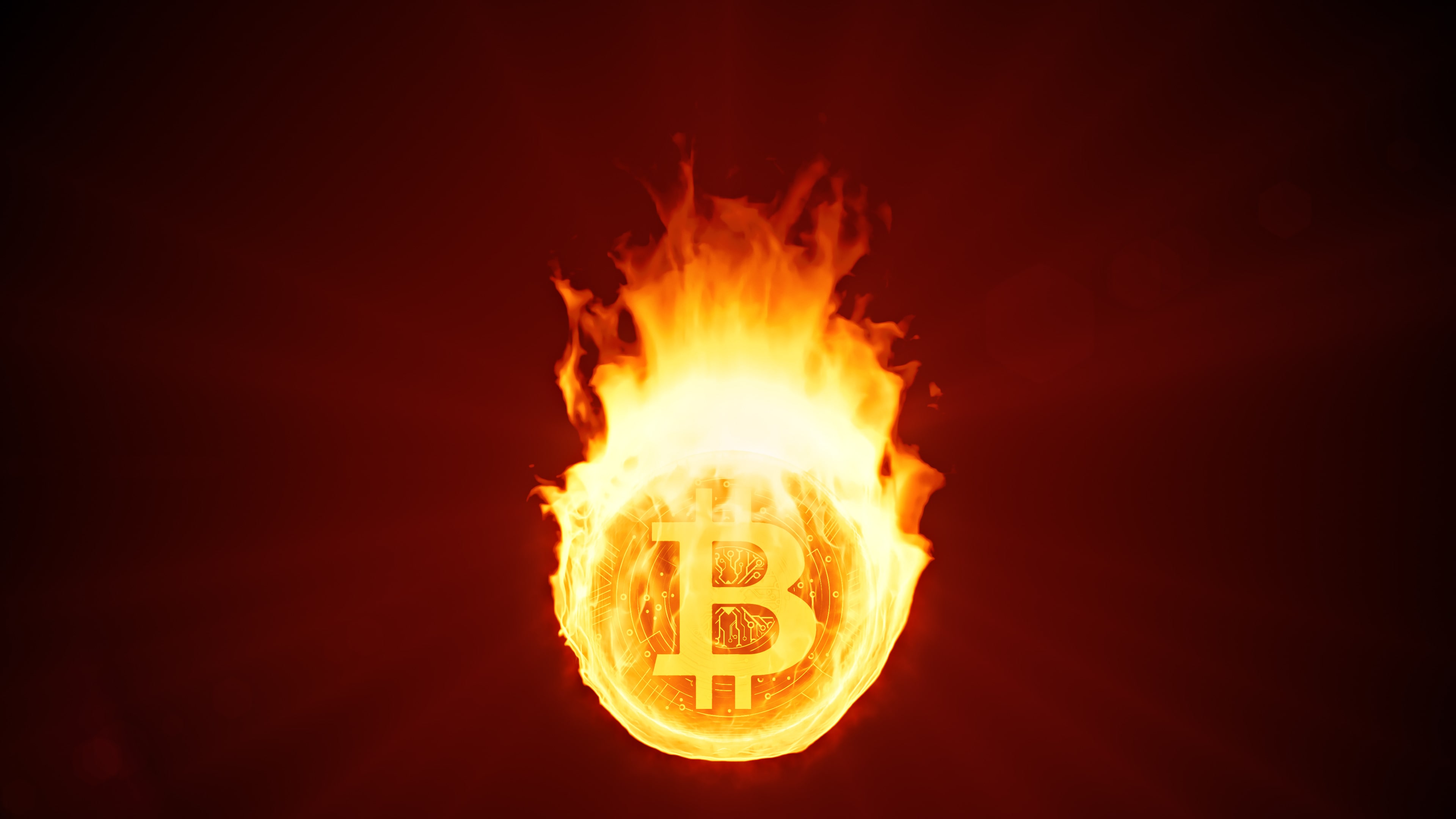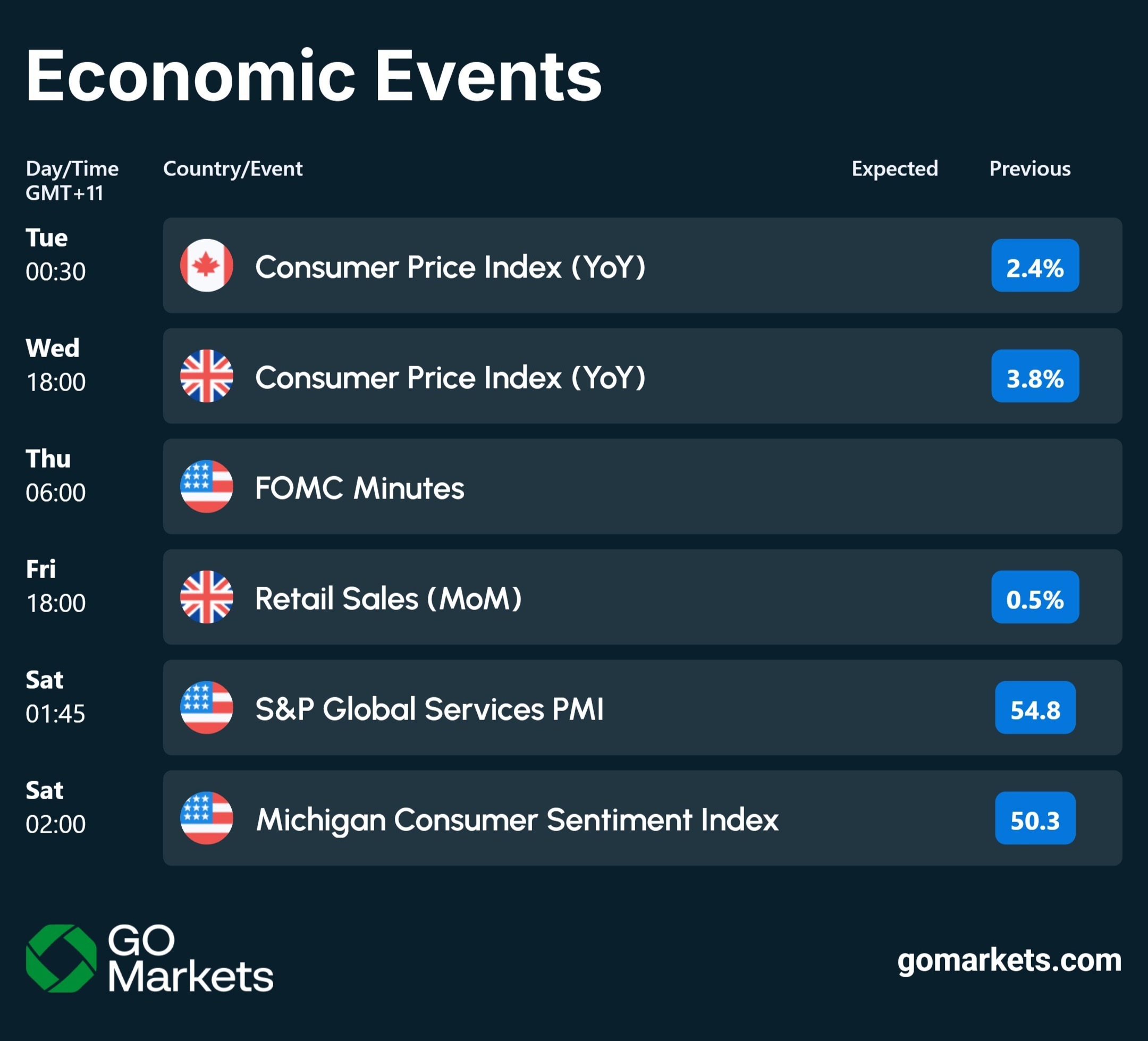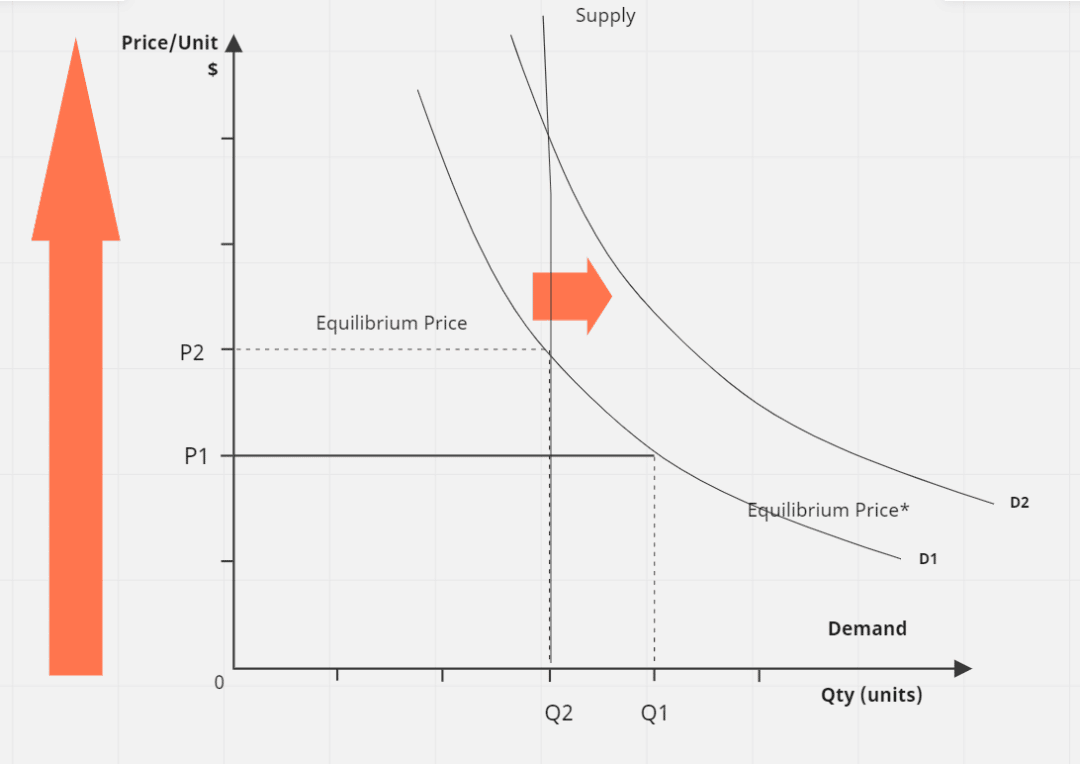市场资讯及洞察

Last week brought some relief as markets found support following the retreat from record highs... with the recent crypto crash being a notable exception.
Bitcoin Breaks Below $100K
Crypto markets are under significant pressure after Bitcoin crashed through the psychological $100,000 level. Currently trading around $94,650, Bitcoin has fallen to its lowest point since May. The $94,000 level appears critical; if it fails, we could see Bitcoin slip back into the $80,000 range and potentially enter bear market territory.
Fed Minutes and Rate Cut Signals
The Federal Reserve minutes are due this week, and they could provide crucial insight into the timing of rate cuts in 2026. Markets have already priced in a likely December cut, but the January 2026 cut that was initially expected may be in jeopardy. Pay attention to the Fed speakers scheduled throughout the week—their comments could help clarify the path forward on monetary policy.
Strong Earnings Season Winds Down
We're in the final stretch of what's been an exceptionally strong earnings season, with 82% of companies beating EPS expectations and 76% surpassing revenue forecasts. This week features some heavyweight reports, most notably Nvidia reporting Wednesday after the bell. Major retailers Target and Walmart will cap things off, giving us a clear picture of consumer health heading into the holidays.
Market Insights
Watch Mike Smith's analysis for the week ahead in markets
Key Economic Events
Stay up to date with the upcoming economic events for the week.



Accenture (ACN) reported its latest financial results before the market open in the US on Thursday. The Irish-American professional services company reported revenue of $16.159 billion for the third quarter of fiscal 2022 vs. $16.04 billion expected. Earnings per share missed analyst expectations for the quarter at $2.79 per share vs. $2.86 per share estimate. ''Our very strong financial results for the third quarter reflect continued broad-based demand across markets, services, and industries, and the continued recognition of the outstanding talent of our 710,000 people.
We continue to gain significant market share, and our services have never been more relevant as our clients turn to us as the trusted partner for the solutions they need to accelerate growth and become more resilient and efficient,'' Julie Sweet, CEO of the company said in a press release after the earnings announcement. Accenture (ACN) chart Shares of Accenture were down by around 1% during the trading day on Thursday at $282.45 per share. Here is how the stock has performed in the past year: 1 Month -3.00% 3 Month -13.07% Year-to-date -31.78% 1 Year -3.01% Accenture price targets Deutsche Bank $364 Cowen & Co. $330 Baird $340 Morgan Stanley $390 RBC Capital $435 Goldman Sachs $386 Barclays $455 Accenture is the 52 nd largest company in the world with a market cap of $179.21 billion.
You can trade Accenture (ACN) and many other stocks from the NYSE, NASDAQ, HKEX and the ASX with GO Markets as a Share CFD. Sources: Accenture, TradingView, MarketWatch, Benzinga, CompaniesMarketCap


The AUDUSD pair has reached an intraday peak of 0.72469 following the RBA decision. The buying action was spurred on by Aussie bullish investors after the RBA decided to increase the interest rate by 50 basis points to 0.85%. This increase was higher than the consensus of 25 basis points.
The RBA is on track to raise the interest rate a few more times before the end of the year. The general consensus by experts and traders is that the interest rate will reach 2.70% by year’s end. Yesterday's interest rate hike is already ahead of consensus of 0.55%, this could mean that the increase is happening faster than expected.
However, the price did not last long at the peak. It was brought back to the previous price points due to a few factors. The AUDUSD reversed its big gains within the hour could be due to investors becoming cautious ahead of the US inflation scares and wanting to transfer their funds back into USD.
Another reason could be coming from the Australian payroll data for the month of April. The Australian labour department has reported an addition of 4,000 jobs in April, which is lower than the forecast of 30,000. These figures would usually trigger recession fears within the Australian economy.
As the RBA looks to impose a policy tightening approach, companies will be forced to be critical on their investment opportunities. This can lead to a further slippage for employment changes. Meanwhile, the US dollar index (DXY) has extended its gains and has overstepped its previous two week’s high at 102.73.
Uncertainty over the release of Friday’s US Consumer Price Index (CPI) is supporting the DXY. A preliminary estimate for the annual US inflation is 8.2% against the prior print of 8.3%. A minor slippage in the US inflation is not going to exhaust the momentum of the DXY bulls but will bolster the odds of a consecutive jumbo rate hike by the Federal Reserve (Fed) next week.
If you are keeping an eye on the AUDUSD and would like to take the opportunity to trade this pair and not yet have a trading account, you can register for a GO Markets CFD account. Source: GO Markets, ASX, RBA, AFR, Fxstreet


As depicted in the AUD/USD hourly chart above, the pair has recently reached a monthly low of 0.69117 as it enters today’s European session. As it continues to decrease in value, it generates a sloping resistance line at 0.6970, this is the trendline from Friday’s prices. Although the trend might appear bearish at the moment, the MACD indicates a bullish trend and the 14 period RSI shows that it is slowly recovering from the recent oversold periods.
This shows that the pair still has some room left to rebound from this level. This in conjunction with the 0.70 psychological level and the 50-HMA level being near the 0.7015 price mark, has encouraged buyers to enter the market to potentially capitalise on the opportunity. To contrast the above information, the one week long resistance line at 0.7050 will be a good price point to watch as there are potential bullish investors waiting to strike at this level.
However, the current downward trend has found its new support line at around the 0.69 price mark. This is quite close to the yearly low of 0.6830, which was set just last month. All in all, we now have two price points to observe as these levels will be reached over the upcoming period and once it has been reached, it will be a new trend.
If you would like to take this opportunity to invest in the movement of the AUD/USD forex pair and you do not yet have a trading account, you can create a CFD trading account with GO Markets.


Continuing from my previous article on Mike Cannon-Brookes and the take over of AGL, there has been some very important breaking news from the Australian giant and the country’s biggest polluter, AGL Energy. To give you some background information; Mike Cannon-Brookes (MCB) had launched a takeover of the company as he felt he could change the company’s strategy to become more emission friendly and to stop the company from a demerger that is likely to cause more harm to the environment and its employees. If you like to have a deep dive, please read my previous article here.
The company's surprising U-turn comes after Atlassian co-founder Mr Cannon-Brookes has been the figurehead of the push to direct AGL away from producing coal-fired power, a practice the energy firm was keen to keep doing by splitting its heavy-polluting assets out into a new company. In a statement to the Australian Securities Exchange on Monday morning, AGL said it was withdrawing the plan, despite the board believing the demerger was the “best way forward”. It was clear that the proposal would not secure the necessary 75% of shareholders at a scheduled 15 th June vote to win approval, which has now been cancelled and will be revisited later in the year.
The utility aims to report to shareholders in September and will provide an update on progress with its earnings results, it said. In the wake of the decision, AGL said its chairman, Peter Botten, would resign from the company’s board upon the appointment of an independent replacement. Graeme Hunt will also exit as Chief Executive and Managing Director once a replacement has been appointed.
Two other board members, Jacqueline Hey and Diane Smith-Gander, will depart, with Hey leaving on Monday and Smith-Gander to resign in August. This shows the company feels that for them to move ahead with a new vision, they must first rid themselves of the influence that has driven them to this point thus far and implement, new people in management that are happy and driven to help the company to a good level of decarbonisation. As it is, AGL supplies about a third of Victoria’s power, and its gas and coal power stations are the biggest greenhouse gas emitters in the country, accounting for about 8 per cent of Australia’s carbon footprint.
Below you can see the effect of the firm in Australia and an insight into why this is so important to MCB. The move has been praised by various groups, starting with MCB Grok Ventures who said, “the sensible decision by AGL to abandon its value destructive demerger plan and renew its board”. Mike Cannon-Brookes followed by Tweeting below: Environmental groups such as Greenpeace Australia cheered Monday’s news and said the failure of AGL’s demerger represented the failure of its old leadership team. “AGL’s humiliating demerger backflip has to go down as one of the most bungled and misguided attempts at a corporate restructure in Australian history,” Greenpeace senior campaigner Glenn Walker said.
The company’s share price fell at the release of the news to as low as $8.42 per share but it has rebounded since, to end higher than the end of last month’s figure at $8.72, showing that there is still faith in the company’s new direction from investors. Source: Australia's Clean Energy Regulator. Chart shows latest data, from 28 th Februry 2022, Bloomberg, news.com.au, The Sydney Morning Herald, The Guardian


November 2021, cryptos are regularly making all-time highs amid a mania like euphoria that increased institutional uptake and a newly launched ETF that crypto traders believed would drive prices even higher towards some of the uber bulls loftier 2021 targets. Two months is a long time in the crypto world and they have lived up to their volatile reputation with the two largest tokens (BTC and ETH) having lost almost half of their value since then. The broader crypto sector has also suffered with more than $1 trillion in losses amid an accelerating panic that the expected Federal reserve tightening cycle will lead to another deep crypto correction.
The question crypto traders are asking is “where to from here?”, is this the start of a deep correction, or an opportunity to Buy the dip? Source: Tradingview While the selling has been relentless since November, it picked up pace after the Federal reserve released their latest minutes in early January. The hawkish tone of the Fed, where it outlined its intention to not only hike rates but to accelerate the tapering of its asset purchase program, saw a broad sell-off of the riskier “bubble” assets, with bitcoin getting hit especially hard amid the rout.
This rapid decline has pushed Bitcoin’s RSI indicator to an extreme oversold level, a level not seen since the pandemic crash of March of 2020. Source: Tradingview Also bringing the price down to within touching distance of the all important, major support level of around 30k USD per token, a support that held previous sell offs in 2021. Source: GO MT4 While these technical may give confidence to the bulls that a bounce is due, there is one interesting fact that has become apparent in the last 12 months.
Cryptos have increasingly transformed from relatively uncorrelated assets providing diversification during market turbulence, into what is effectively a high beta stock. The increasing BTC correlation with high growth tech stocks means that not only do traders need to take Bitcoin fundamentals and technicals into account, but also the fundamentals/technicals of the high growth tech sector as well, the chart below shows this BTC correlation with the FAANG basket (Facebook, Amazon, Apple, Netflix and Google) Source: Tradingview One of the main reasons for this correlation is the increase in institutional adoption of cryptos, the same institutions that are now facing margin calls on their tech holdings, are also dumping cryptos to provide much needed liquidity. Antoni Trenchev,, co-founder of Nexo, cites Bitcoin’s correlation to the tech-heavy Nasdaq 100, which right now is near the highest in a decade. “Bitcoin is being battered by a wave of risk-off sentiment.
For further cues, keep an eye on traditional markets,” he said. “Fear and unease among investors is palpable.” The evidence is growing that Bitcoin and altcoins should be classed as risk assets rather than safe havens. Along with fears of central bank tightening and an increasing liquidation of correlated risk assets, crypto also has had to deal with a relentlessly pessimistic news cycle. Recently regulators from Spain, the U.K., Russia and Singapore all announced regulations and interventions that could undermine crypto uptake and growth in those regions.
Out of the US as well, cryptos are under scrutiny with federal agencies tasked with assessing the risks and opportunities that cryptos pose in a report due as early as February. It's not all doom and gloom with cryptos though, crypto bulls and many analysts point out that on all previous occasions of crypto carnage, they eventually rebounded to new all time highs. “At some point, sellers will become exhausted and the market could see some capitulation soon”, said Matt Maley, chief market strategist for Miller Tabak + Co. “When that happens, the institutions will come back in in a meaningful way,” he said. “ Once the asset class becomes more washed-out, they’ll have a lot more confidence to come back in and buy them. They know that cryptos are not going away, so they’ll have to move back into them before long.” Ironically, the real support could come from the Federal reserve as they realise that hawkish tone they have set may be to much for an economy that is slowing and could pivot to the dovish side in this week's FOMC meeting, a pivot which would be expected to send risk assets sharply higher, cryptos with it. “If we see a bigger selloff in equities, expect the Fed to verbally intervene to calm nerves and that’s when Bitcoin and other cryptos will bounce.” Said Nexo's Trenchev.
This effect could be seen in Mondays (24/01) huge turn around in equities and Bitcoin, bitcoin soared $3000 from its low to finish positive for the session, this was on the back of rate hike expectations dropping dramatically during the day as the market started to price in a backed into a corner Fed striking a more dovish tone than previously expected in Thursdays FOMC meeting as the below chart shows. Source: Tradingview Thursday's Fed meeting will be pivotal for the near term direction of Bitcoin and Cryptos in general, and any serious crypto trader should be tuning in. 2022 will be an exciting year for cryptos, with strong forces on both sides of the bull / bear argument. The bears have a seemingly endless negative news cycle, with regulatory and market risk weighing heavily on crypto prices.
The bulls have the Fed, a Fed that has shown in the past that the faster markets crash, the faster they panic and move to stabilise the stock market, this will also benefit other risk assets, Bitcoin and other cryptos among them. Whichever side a trader picks, they will have to be nimble and be across the fundamentals and technicals of the broader market, not just the crypto chart they are looking at.


热门话题
一年一度的dota2国际邀请赛将要召开啦。Dota2国际邀请赛也俗称TI,之前已经召开了10次比赛而这一次的就是TI 11.这次举办的地址选在了新加坡,这是电竞界的最高盛事首次来到东南亚。这将是迄今为止连续四个周末的Dota 赛事,共有来自世界各地的30 支队伍参加,这也将是迄今为止最大的Dota 赛事。

Dota 2是由Valve在2013年开发和发行的多人在线战斗竞技场(MOBA)视频游戏。该游戏是远古防御( Defense of the Ancients )的续集,DOTA是暴雪娱乐的《魔兽争霸III:混沌之治》社区创建的模组。Dota 2是在两由五名玩家组成的队伍之间进行的比赛,每支队伍在地图上占领和保卫自己的独立基地。十名玩家中的每一位都独立控制一个强大的角色,称为“英雄”,他们都拥有独特的能力和不同的游戏风格。在比赛期间玩家收集经验值 以及进行物品的购买,为了可以击杀对方团队的英雄。一个团队首先摧毁了另一个团队的“古代遗迹”,这是一个位于队伍己方基地,一旦基地遗迹被摧毁,那么摧毁方就会赢得比赛。因此,在这样的规则下,就让Dota2的比赛充满着许多的不确定性,无论击杀对方英雄多少次,一旦遗迹被摧毁,还是会输掉比赛。所以,DOta2的游戏魅力应运而生,那就是有无限的可能性,有时候一个小小的失误也可能葬送掉比赛。不过就是dota2的学习周期太长和上手难度高,导致游戏新鲜血液也越来越少。在今年8月分开始出售新加坡Ti11的比赛门票,但是在短短的15秒钟,门票就被黄牛抢购一空,作为想买门票的doter,不禁也感叹,黄牛真厉害。

不过,我们今天就来讲一讲从dota2国际邀请赛购票衍生出的黄牛经济学。黄牛一词的出现,是来源于20世纪的上海,在当时,票贩子进行抢票的的时候都是跑得快,挤的厉害,人们就称其“似黄牛之群骚动”。那么这个词真正开始推广的原因是之前的春运。春运期间,无数的人返现家,那么春运票就出现了供不应求的一个情况,而且因为政策的限制,票价不可能持续上涨。在这种情况下,黄牛就看准了这个机会,提前购入大量票,然后以高价把票卖出去,以此来牟利。纵观历史,黄牛实际上一直都存在于我们的社会生活当中。各个地方的叫法不同,有叫倒爷的,有叫黄牛的。然而他们都是同一类人。随着时代的改变,黄牛的倒卖范围也在不断的增加,从之前的演唱会票,到后来的Dota2 Ti 票,新上市的电子产品,甚至医院的挂号。大部分人把黄牛归结为管制的不够完善,而实际上,其中也存在的底层的经济学逻辑,让黄牛这一职业存活了下来,甚至到这些年,存活的也越来越好。

首先,最大的问题就是供不应求和价格的控制。对于这些情况,实际上就存在一个供不应求的关系。每年或者每个时间段有的供给是一个固定的数量(图中的S),但是在需求端是在逐渐上升的(D1-D2)。那么就造成供求曲线不存在任何的弹性。同时,在价格严格控制的同时,原本可以通过涨价使得需求降低的情况也不存在。这时候,黄牛的就应运而生,黄牛通过牟利,赚取差价,让票价上市(P1-P2),从而需求降低(Q1-Q2)。从某种意义上来说,黄牛“创造”了一个二级市场,然后通过自定义价格去使得供需达到一个罕见的平衡。当然,这个自定义的票价也不是随便去定义的,而是符合市场需求环境去定价。只要一天供给达不到平衡,价格继续被控制住,黄牛就会继续牟利。

以这次Ti门票为例,实际上,对于决赛的门票一定需求大于供给的,那么黄牛看准这个机会,先抢到这个票,把价格提上来,最后卖出去牟利,而黄牛也知道,决赛门票只要不是贵的离谱,近期是不会出现滞销的,因此,很多人成为的抢不到票的倒霉蛋。进而大概率只能去购买高价的黄牛票。其次,就是定价的公平性。实际上很多东西的定价对于不同人群是不同的。举个例子,抢购某个新产品,会员价格是5000,非会员价格是7000.那么这样的情况就会自然而然的产生差价,要么我就成为会员,要么就是找有会员的人买。当然,有会员的人出售的时候,大部分都不会以5000的原价出售。因为我费时费力的抢购,但是又不会以7000的非会员价出售,这时候可能6000就是一个合理价格,那么就可以达成双方都开心的局面。没需求的会员赚了1000,有需求的非会员节省了1000元。当然,这并不能改变黄牛在我们心中的地位。最主要的原因就是,黄牛打破了一个最基本的原则。公平。因为无论是我们抢票还是买东西,只要我们有足够的资金,都有权去购买想要的产品,这就是有着同样机会的公平性。就像但是黄牛通过自身的手段,使我们失去了这种机会和权力的公平性。其次就是使得供求双方的权利受损的可能性非常大。因为其使得供需双方不能直接交易,那么很容易出现就是分配不公平的现象。最简单的例子就是,黄牛价格太狠,导致演唱会门票滞销,想看演唱会的人看不到,辛辛苦苦准备的歌手等主办方努力付诸东流。然后就是,黄牛中不可避免的存在有欺诈的存在,导致供需双方利益进一步受损。免责声明:GO Markets分析师或外部发言人提供的信息基于其独立分析或个人经验。所表达的观点或交易风格仅代表其个人;并不代表GO Markets的观点或立场。联系方式:墨尔本 03 8658 0603悉尼 02 9188 0418中国地区(中文) 400 120 8537中国地区(英文) +248 4 671 903作者:Neo Yuan | GO Markets 助理分析师

